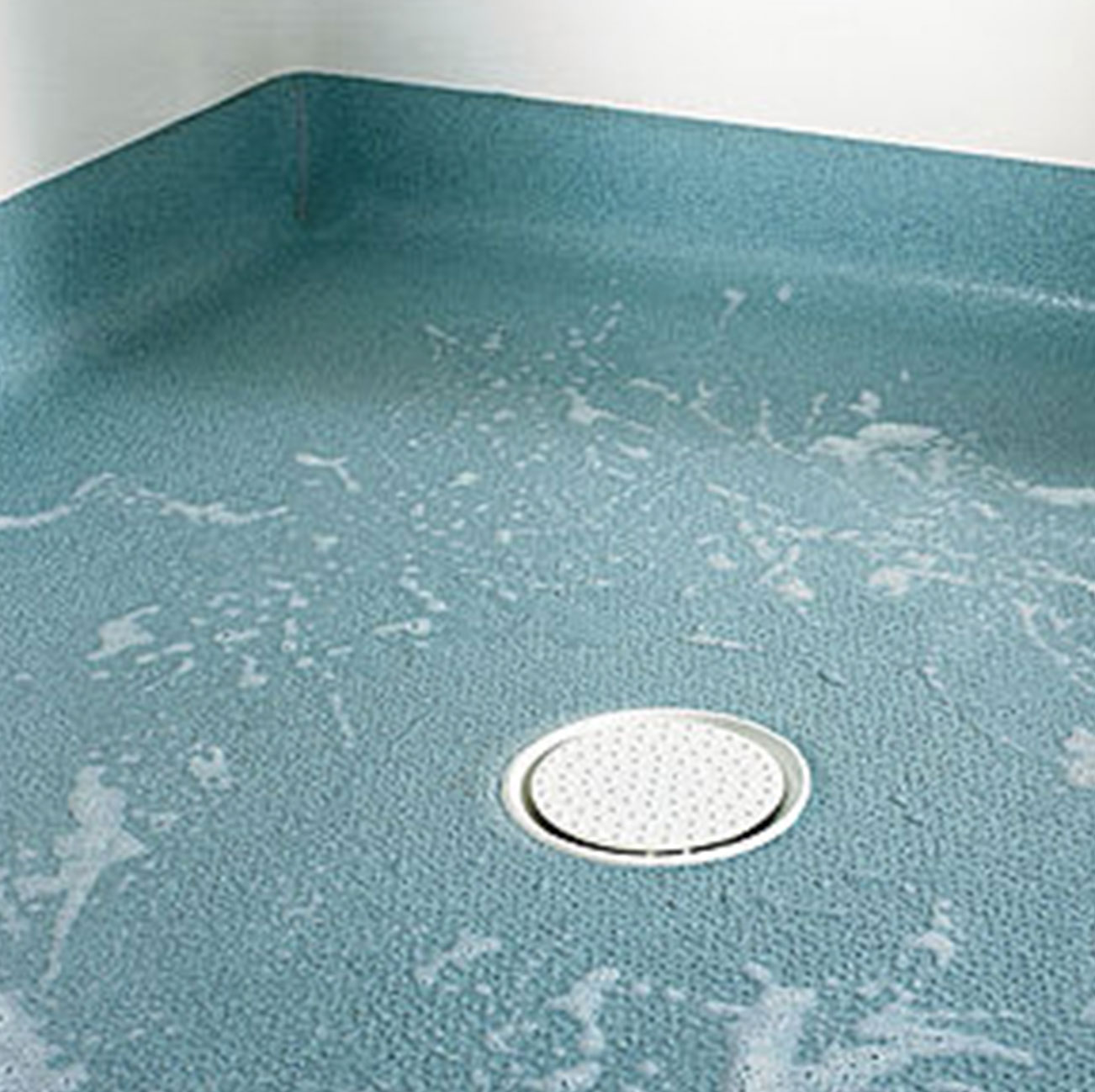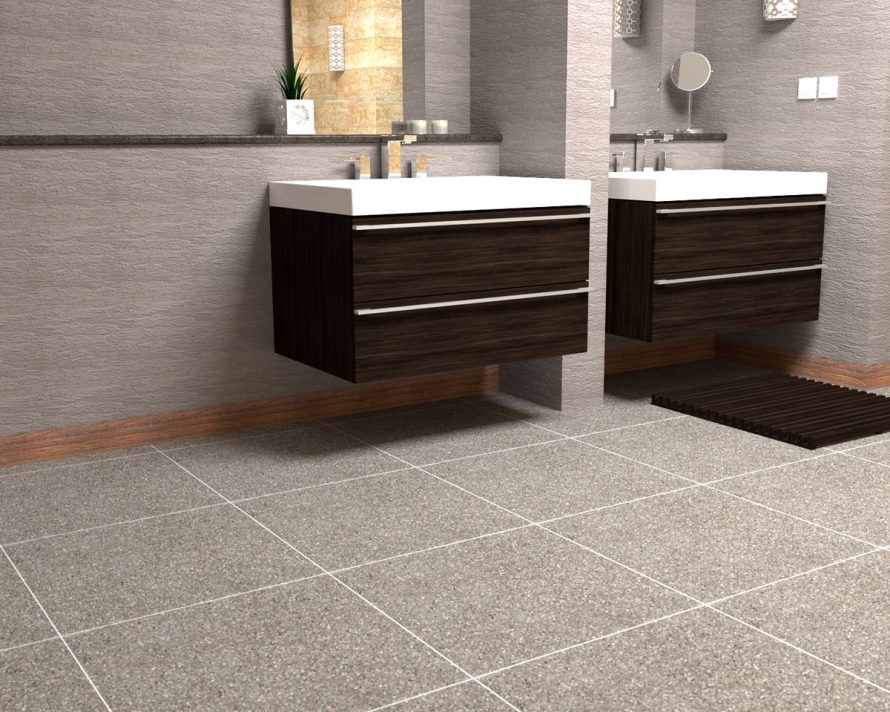Understanding No-Slip Bathroom Flooring: No Slip Bathroom Flooring

Bathrooms are often havens for relaxation and rejuvenation, but they can also pose a significant safety hazard if the flooring is not slip-resistant. Slippery surfaces, especially when wet, can lead to dangerous falls, causing injuries ranging from minor bruises to serious fractures.
The Importance of Slip-Resistant Flooring
Slip-resistant flooring is crucial in bathrooms to minimize the risk of falls and accidents. The inherent wetness of bathrooms, combined with the presence of soap, shampoo, and other liquids, creates a slippery environment that can be particularly dangerous for individuals of all ages.
Risks Associated with Slippery Bathroom Surfaces
Slippery bathroom surfaces can pose significant risks, including:
- Falls and Injuries: Wet floors, especially those made of smooth materials like polished tiles, can lead to slips and falls, resulting in bruises, fractures, head injuries, and other serious injuries.
- Increased Risk for Elderly and Children: Elderly individuals and young children are particularly susceptible to falls due to reduced balance and coordination. Slippery bathroom floors can exacerbate these vulnerabilities, increasing the likelihood of accidents.
- Reduced Mobility and Independence: Falls can lead to mobility limitations, reduced independence, and an increased need for assistance, impacting an individual’s quality of life.
Common Causes of Bathroom Slips and Falls
Several factors contribute to bathroom slips and falls, including:
- Wet Floors: Water from showers, spills, and condensation can create slippery surfaces.
- Smooth Flooring Materials: Polished tiles, marble, and other smooth materials offer little friction, increasing the risk of slipping.
- Soaps and Shampoos: Soap residue and shampoo can create a slippery film on the floor.
- Improper Cleaning and Maintenance: Inadequate cleaning and maintenance can leave behind residue that makes floors slippery.
- Lack of Adequate Lighting: Poor lighting can make it difficult to see wet spots and other hazards, increasing the risk of slips and falls.
Overview of No-Slip Flooring Materials
A wide range of no-slip flooring materials are available, each with its unique properties and benefits:
- Ceramic and Porcelain Tiles: These tiles can be slip-resistant if they have a textured surface, such as a matte finish or a textured pattern. Tiles with a coefficient of friction (COF) of 0.42 or higher are considered slip-resistant.
- Natural Stone: Natural stone, such as slate, granite, and travertine, can also be slip-resistant, especially when textured or honed. However, it’s important to choose a stone with a rougher surface for added safety.
- Vinyl Flooring: Vinyl flooring is a popular choice for bathrooms due to its durability, water resistance, and affordability. Many vinyl tiles and planks come with textured surfaces that provide slip resistance.
- Rubber Flooring: Rubber flooring is known for its excellent slip resistance, durability, and cushioning properties. It’s a good option for areas where water and moisture are prevalent.
- Epoxy Flooring: Epoxy flooring is a durable and highly slip-resistant option. It can be customized with various colors and patterns to match any bathroom decor.
Bathroom Floor Designs that Prioritize Safety
When designing a bathroom, incorporating safety features is crucial. Here are some examples of bathroom floor designs that prioritize safety:
- Textured Flooring: Using textured flooring materials, such as tiles with a matte finish or a textured pattern, can significantly improve slip resistance.
- Non-Slip Rugs and Mats: Placing non-slip rugs and mats in high-traffic areas, such as the shower or tub area, can provide additional traction and prevent falls.
- Adequate Lighting: Ensuring sufficient lighting throughout the bathroom is essential for visibility, especially in areas prone to water spills.
- Grab Bars: Installing grab bars near the shower, bathtub, and toilet can provide support and stability, reducing the risk of falls.
Choosing the Right No-Slip Flooring

Selecting the right no-slip flooring for your bathroom is crucial for ensuring safety and preventing accidents. It’s not just about preventing slips and falls; it’s also about creating a comfortable and stylish space. This section will delve into the various no-slip flooring options available, comparing their properties, pros and cons, and suitability for different bathroom needs.
Comparing No-Slip Flooring Options, No slip bathroom flooring
Understanding the properties of different flooring materials is key to making an informed decision. Here’s a comparison of some common no-slip flooring options:
- Tile: Ceramic and porcelain tiles are durable, easy to clean, and come in a wide range of styles. However, they can be slippery when wet, especially if they have a smooth finish. To enhance slip resistance, look for tiles with textured surfaces, raised patterns, or a rough finish. Some manufacturers offer tiles with a higher coefficient of friction (R-value), specifically designed for wet areas.
- Vinyl: Vinyl flooring is affordable, waterproof, and comes in various styles, mimicking the look of tile, wood, or stone. It is generally more slip-resistant than smooth tiles, but some vinyl flooring types can still be slippery when wet. Look for vinyl flooring with a textured surface, embossed patterns, or a slip-resistant coating for optimal safety.
- Laminate: Laminate flooring is a popular choice for its durability and affordability. However, most laminate flooring is not suitable for bathrooms as it can be damaged by moisture. There are some water-resistant laminate options available, but these are generally not as slip-resistant as other flooring types.
- Natural Stone: Natural stone like slate, granite, and marble can add elegance and durability to your bathroom. However, natural stone can be slippery when wet, especially if it has a polished finish. To minimize slip hazards, choose stone with a textured or honed finish.
- Rubber Flooring: Rubber flooring is highly slip-resistant and durable, making it an excellent choice for bathrooms. It is often used in commercial settings due to its safety features and easy maintenance. Rubber flooring is available in various colors and patterns, offering some design flexibility.
Factors to Consider When Selecting No-Slip Flooring
Choosing the right no-slip flooring depends on several factors:
- Foot Traffic: Consider the amount of foot traffic your bathroom receives. High-traffic areas may require more durable and slip-resistant flooring, such as rubber or textured tile.
- Style and Design: Your bathroom’s overall style and design should guide your flooring choice. Tile offers a wide range of styles and colors, while vinyl can mimic the look of other materials. Rubber flooring is generally available in fewer design options.
- Budget: Flooring options vary in price, so consider your budget constraints. Vinyl and laminate are generally more affordable than tile or natural stone.
- Maintenance: Different flooring materials require varying levels of maintenance. Tile and natural stone may require regular sealing, while vinyl and rubber are generally low-maintenance.
Slip Resistance Coefficient (R-Value)
The slip resistance coefficient (R-value) measures a flooring surface’s resistance to slipping. Higher R-values indicate greater slip resistance. Here’s a table comparing the R-values of different flooring types:
| Flooring Type | R-Value |
|---|---|
| Smooth Tile | 0.4 – 0.6 |
| Textured Tile | 0.6 – 0.8 |
| Vinyl Flooring | 0.5 – 0.7 |
| Rubber Flooring | 0.8 – 1.0 |
Recommendations for No-Slip Flooring
- Small Bathrooms: For small bathrooms, textured tile or vinyl flooring with a slip-resistant coating can create a safe and stylish space.
- Large Bathrooms: In large bathrooms with high foot traffic, rubber flooring or textured tile with a high R-value is recommended for optimal safety.
- Modern Bathrooms: For modern bathrooms, consider large-format tiles with a textured surface or vinyl flooring with a contemporary pattern.
- Traditional Bathrooms: Traditional bathrooms can benefit from natural stone with a honed finish or ceramic tile with a classic pattern.
Installing No-Slip Bathroom Flooring

Installing no-slip bathroom flooring requires careful preparation and execution to ensure a safe and durable surface. This section Artikels the steps involved in installing no-slip flooring, covering preparation, installation techniques, safety precautions, and best practices.
Preparing the Bathroom Surface
Before installing no-slip flooring, it’s crucial to prepare the bathroom surface for optimal adhesion and a smooth finish. This involves removing existing flooring, cleaning the subfloor, and ensuring a level surface.
- Remove Existing Flooring: Carefully remove the existing flooring, whether it’s tiles, vinyl, or another material. Ensure you dispose of the old flooring materials responsibly.
- Clean the Subfloor: Thoroughly clean the subfloor, removing debris, dirt, and any residue from the old flooring. You can use a vacuum cleaner or a broom to remove loose debris, followed by a damp mop to clean the surface. Allow the subfloor to dry completely before proceeding.
- Level the Subfloor: If the subfloor is uneven, level it using a self-leveling compound or by adding plywood shims. A level surface ensures that the new flooring will be installed evenly and securely.
Installing No-Slip Flooring
Once the bathroom surface is prepared, you can proceed with installing the no-slip flooring. The installation process may vary depending on the type of flooring you choose, but generally involves these steps:
- Measure and Cut: Measure the bathroom area and cut the flooring tiles or sheets to fit the space. Use a sharp utility knife or a tile cutter for precise cuts.
- Apply Adhesive: Apply a thin layer of adhesive to the subfloor using a trowel. The adhesive type will depend on the flooring material you’re using. Follow the manufacturer’s instructions for the recommended adhesive and application method.
- Install the Flooring: Carefully position the flooring tiles or sheets onto the adhesive-coated subfloor. Ensure they are aligned and flush with each other. Use a rubber mallet to gently tap the tiles into place and ensure a tight fit.
- Seal the Edges: Seal the edges of the flooring using a sealant compatible with the material. This prevents moisture from seeping into the subfloor and causing damage.
- Allow to Dry: Allow the adhesive and sealant to dry completely before applying grout or sealant to the seams between tiles, if necessary.
Safety Precautions and Best Practices
Installing no-slip flooring involves working with tools and materials that can pose safety risks. Following these precautions and best practices can help ensure a safe installation:
- Wear Protective Gear: Wear safety glasses, gloves, and dust masks to protect your eyes, hands, and respiratory system from dust and debris.
- Use Proper Tools: Use sharp, well-maintained tools to avoid accidents. Always handle tools with care and follow the manufacturer’s instructions.
- Ventilation: Ensure adequate ventilation during the installation process, especially when working with adhesives and sealants. Open windows and doors to allow fresh air to circulate.
- Work in a Clean Environment: Keep the bathroom clean and free of clutter to avoid tripping hazards. Clean up spills and debris promptly.
No slip bathroom flooring is crucial for safety, especially in areas like showers and tubs. When designing your bathroom, it’s important to consider both safety and aesthetics. If you’re working with a smaller space, you might find inspiration in master bathroom floor plans 10×10.
These plans often feature clever layouts and materials that maximize functionality while still prioritizing safety features like no slip flooring.
No-slip bathroom flooring is essential for safety, especially for families with young children or seniors. While some options can be expensive, there are ways to achieve a stylish and safe bathroom floor without breaking the bank. Check out this article for some cheap bathroom floor makeover ideas.
You can find affordable and stylish options like vinyl tiles, peel-and-stick flooring, or even painting your existing floor with a non-slip epoxy paint. No matter your budget, there’s a solution for a safe and beautiful bathroom floor.